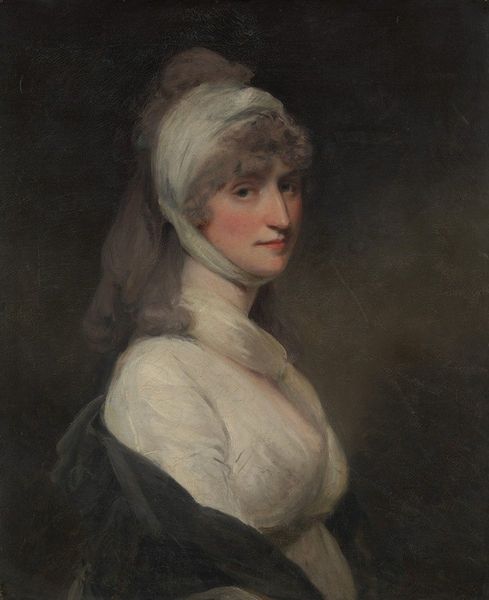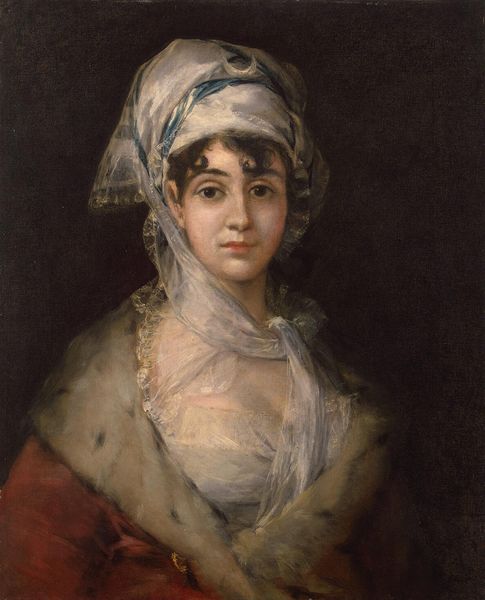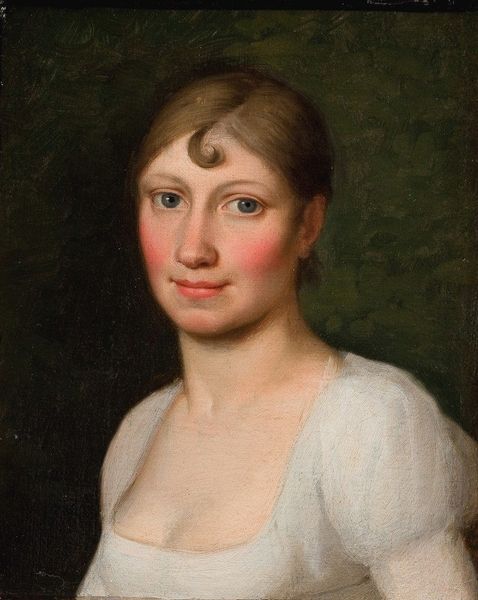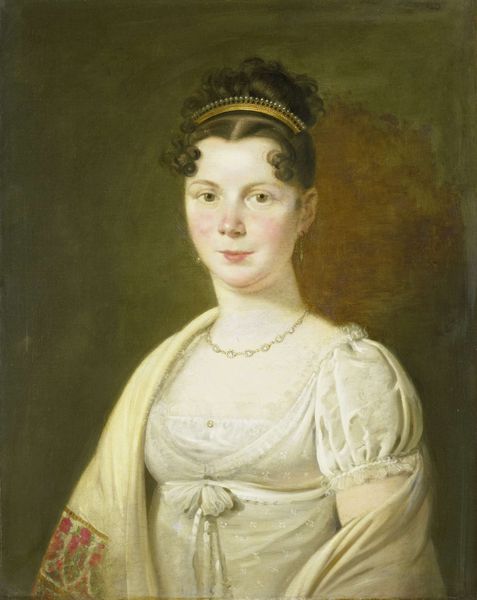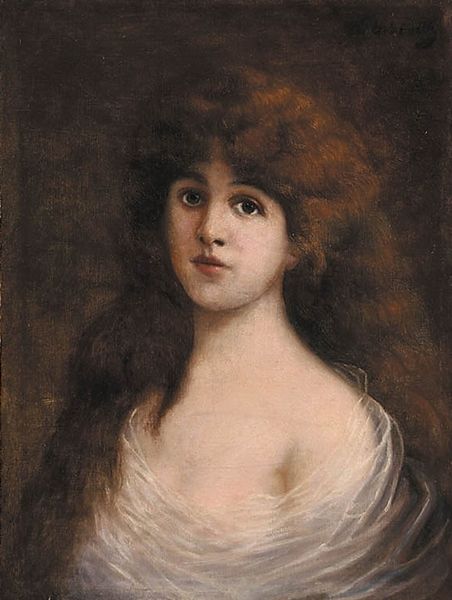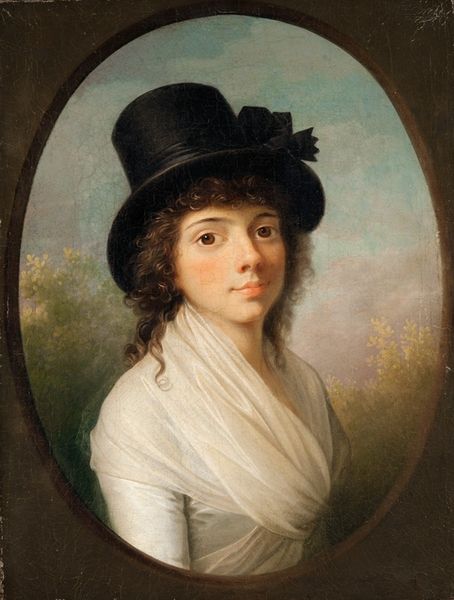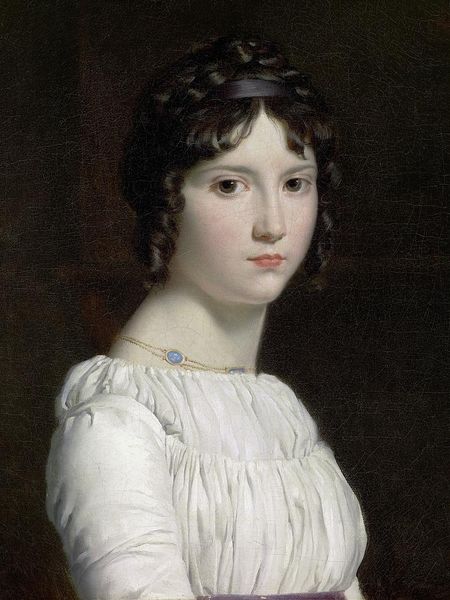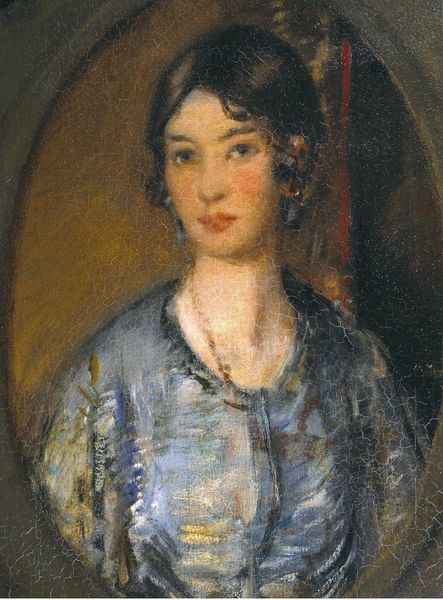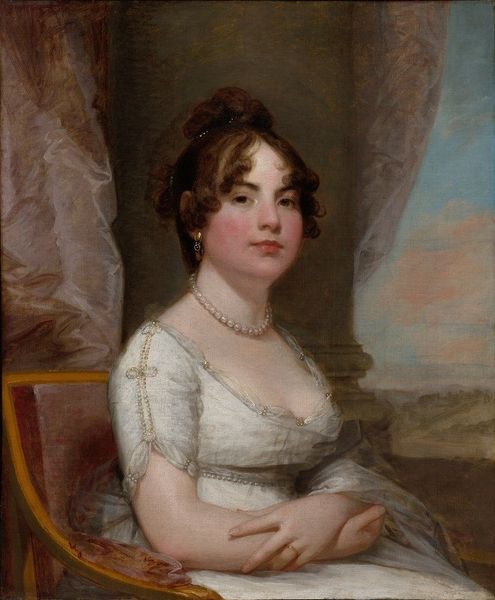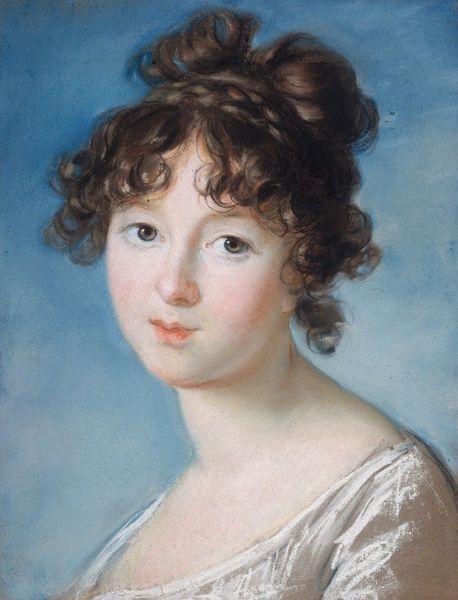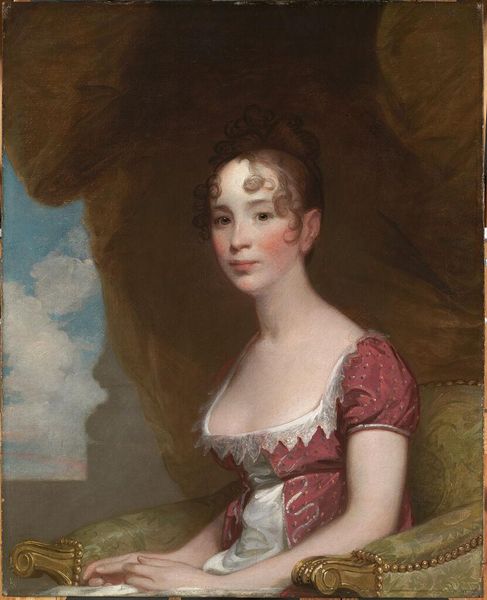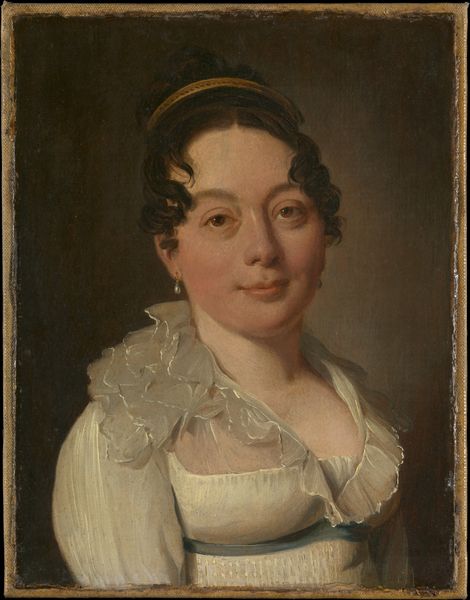
painting, oil-paint
#
portrait
#
figurative
#
painting
#
oil-paint
#
figuration
#
romanticism
Copyright: Public Domain: Artvee
Louis Léopold Boilly painted this portrait of a woman in a white dress, sometime around the late 18th or early 19th century in France. The woman's gaze is direct and engaging. Her simple white dress, in the Empire style, speaks of a shift away from the opulent fashions of the aristocracy towards a more streamlined, classical mode. This change reflects the social upheavals of post-revolutionary France. Boilly was known for his detailed genre paintings capturing Parisian life, but he also made portraits for a clientele eager to define their place in a rapidly changing social order. The politics of imagery were particularly fraught during this period, as portraiture had long been associated with power and status. Analysing fashion, pose, and setting through primary sources such as fashion plates, letters, and diaries can reveal how individuals negotiated their identities in this era of social transformation. The role of institutions such as the French Academy is crucial to understanding the artistic and political context in which Boilly worked.
Comments
No comments
Be the first to comment and join the conversation on the ultimate creative platform.

